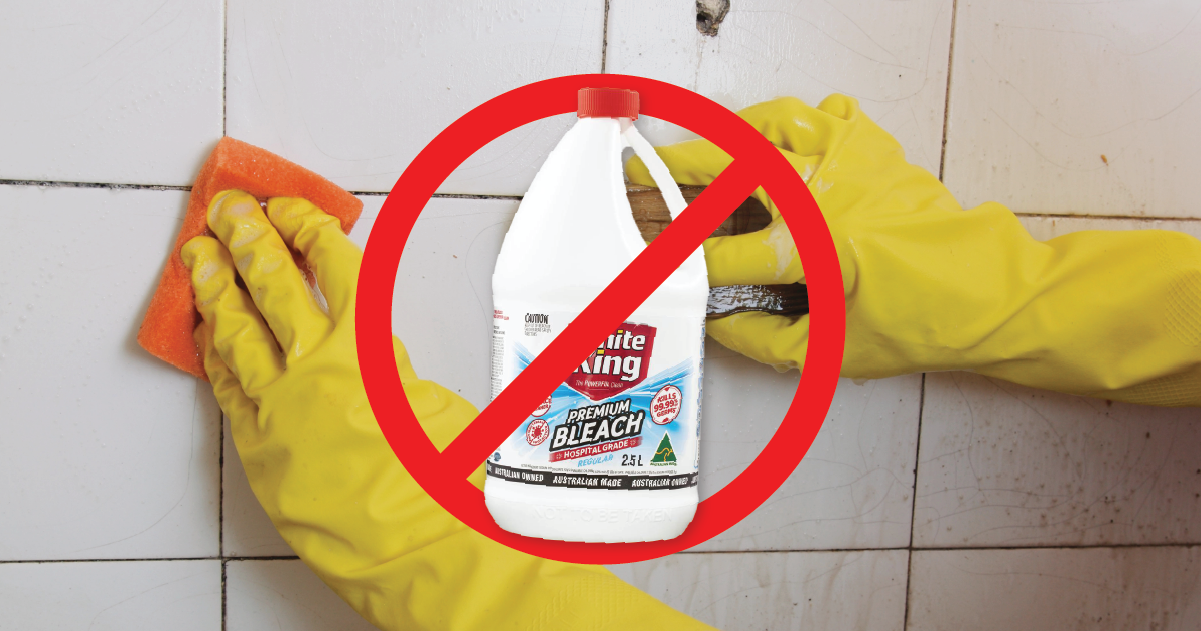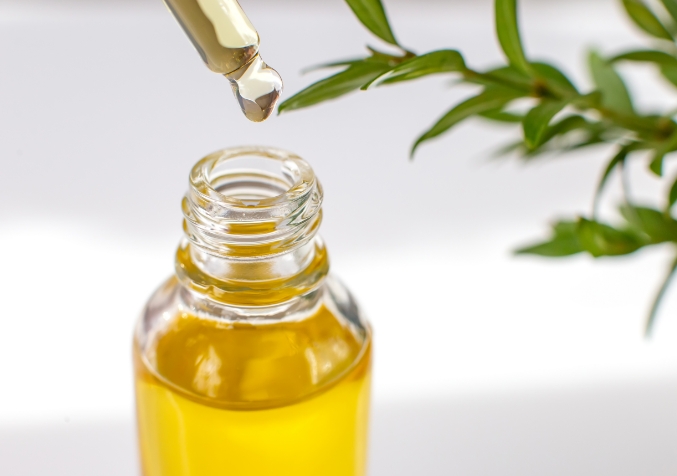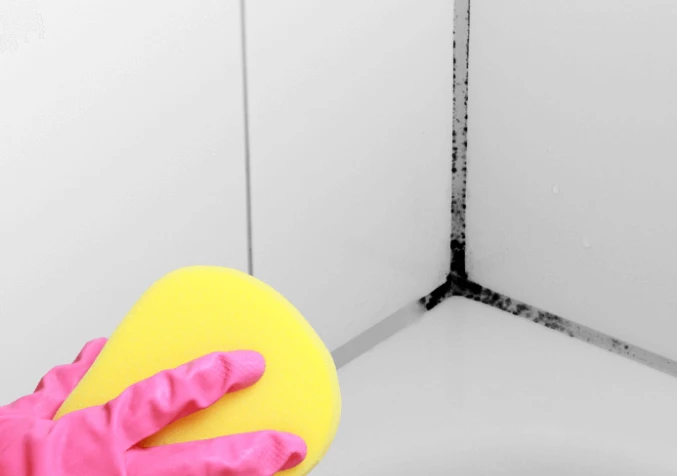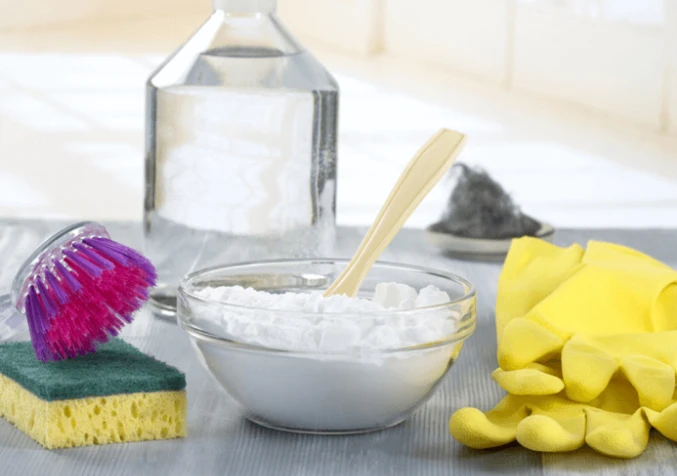How to Kill Bathroom Mould Without Bleach
Published on Nov 18, 2019 | Updated - May 8, 2024

If you've been in a battle against mould, you'll know the dilemma: to bleach or not to bleach? I know that bleach is a health hazard, but it often seems like the only effective way to fight the darkness slowly invading my home.
Well, there's bad news and good news. It turns out that bleach doesn't actually kill mould! According to the ABC's resident mycologist Dr Neumeister-Kemp, bleach does more harm than good:
"The fungi contain melanin, and the bleach just takes the colour out, but the fungi are still there; you are just masking it… Six weeks later, it appears to come back, but it was never gone."

Dr Neumeister-Kemp, Mycologist
The Misconception About Bleach
Bleach has long been considered the go-to solution for dealing with mould. Its strong odour and whitening effect may give the illusion of a clean surface, but the truth is it doesn't eliminate mould at its root. Instead, it merely disguises the problem, allowing mould to resurface later on. Fortunately, there are natural alternatives that not only eradicate mould effectively but also safeguard your health.
Top Natural Ways to Get Rid of Mould
There are four main natural cleaning products that can help you get rid of mould. These can be used in isolation or together, depending on your mould situation and what you have on hand.
1) Cleaning Mould with Vinegar and Tea Tree Oil

Vinegar, a mild acid, stands as an excellent mould killer. Unlike bleach, vinegar attacks the fungi mechanically and penetrates into their structure, effectively exploding and killing the mould. Paired with the antimicrobial properties of tea tree oil, the duo becomes a powerful mould-busting spray.
Application:
- For mild and small mould problems, saturate the mould with a vinegar and tea tree oil solution and let it soak for 15 minutes before wiping the area clean with water.
- For more serious mould problems, let the vinegar/tea tree solution sit for an hour before wiping it clean with water. Repeat the process if necessary until the mould is completely gone.
Studies Supporting Vinegar and Tea Tree Oil for Mould Cleaning
Several studies have highlighted the effectiveness of vinegar and tea tree oil in combating mould. A research paper published in the International Journal of Environmental Research and Public Health concluded that "vinegar exhibited potent antifungal activity against mould species commonly found in indoor environments."
Furthermore, a study conducted by the Department of Microbiology at Sydney University found that tea tree oil showed significant antimicrobial properties against mould and other fungi.
2) Cleaning Mould with Hydrogen Peroxide

Hydrogen peroxide emerges as a remarkable and versatile cleaner, boasting potent anti-fungal, anti-viral, and anti-bacterial properties. This powerful solution offers an effective and eco-friendly alternative to bleach for tackling mould infestations.
Application
- Transfer the hydrogen peroxide into a clean spray bottle for easy application. Liberally spray the solution onto the mould-infested areas, ensuring complete coverage.
- Allow the hydrogen peroxide to work its magic on the mould. Let it sit for about 10-15 minutes, granting the solution sufficient time to penetrate and break down the mould's structure.
- After the dwell time has elapsed, gently scrub the treated surfaces with a sponge or soft brush. The combination of the solution's cleaning properties and your efforts will help remove the mould from the affected area. Finally, rinse the area thoroughly with water to wash away any remaining residue.
3) Cleaning Mould with Bi-Carb Soda

Bicarbonate soda is a natural disinfectant with a mild smell, making it a suitable alternative to vinegar for killing mould on non-porous surfaces. However, for porous surfaces like gyprock walls, vinegar remains the better choice.
Application:
- Mix a small spoonful of Bi-Carb in a full spray bottle of water and shake to combine.
- Spray the solution onto the mould, scrub away the mould, and then rinse.
Preventive Measures for Mould Control

Preventing mould growth in the first place is as important as knowing how to get rid of it. Here are some proactive steps you can take to control mould in your bathroom:
Proper Ventilation
Ensure your bathroom boasts sufficient ventilation to combat excess humidity and moisture. Utilize exhaust fans or open windows during and after showers to promote proper air circulation, thwarting mould's ideal breeding conditions.
Fix Water Leaks
Swiftly address any water leaks or plumbing issues to prevent moisture accumulation, which can create an inviting environment for mould growth. Prompt action in fixing leaks safeguards your bathroom against potential mould infestations.
Use Dehumidifiers
Consider employing dehumidifiers in areas prone to excessive moisture. These devices efficiently maintain a controlled humidity level, effectively curbing mould's ability to thrive in damp conditions.
Regular Cleaning
Embrace a regular cleaning routine to thwart mould from taking hold in your bathroom. Wipe down tiles, walls, and shower curtains at consistent intervals, using natural mould-killing solutions like vinegar and tea tree oil to maintain a mould-free environment.
By adopting these proactive steps, you can safeguard your bathroom from mould infestations, ensuring a clean and healthy space for you and your family. Stay ahead in the battle against mould with these preventive measures, upholding a hygienic and inviting bathroom atmosphere.
Expert Mould Removal
While the natural methods mentioned above are effective for most cases, some mould infestations may require expert attention. If you have a serious mould problem that you haven't been able to get rid of, consider reaching out to expert mould remediation specialists like Electrodry. Electrodry Mould Removal's expertise and tools can remove mould at its source and ensure it stays gone for a full 12 months.
Get in Touch with an Electrodry Mould Removalist Now
Final Thoughts
Bleach may seem like a quick fix for mould issues, but it only masks the problem and allows mould to resurface later. Embracing natural alternatives like vinegar, tea tree oil, hydrogen peroxide, and bicarbonate soda not only kills mould effectively but also ensures a safer and healthier environment for you and your family.